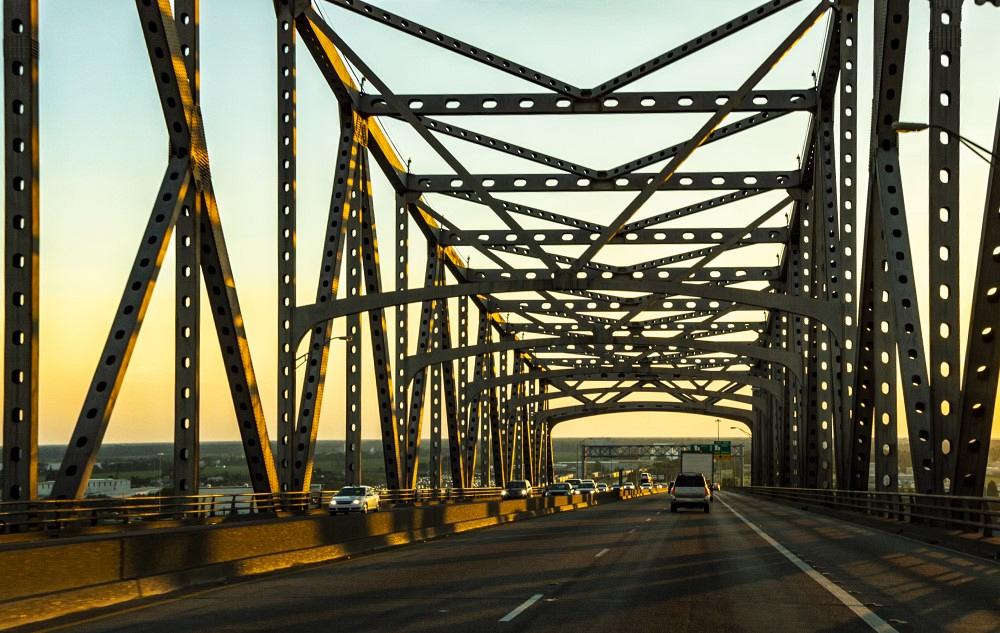Contributing Writer
- FMA
- The Fabricator
- FABTECH
- Canadian Metalworking
Categories
- Additive Manufacturing
- Aluminum Welding
- Arc Welding
- Assembly and Joining
- Automation and Robotics
- Bending and Forming
- Consumables
- Cutting and Weld Prep
- Electric Vehicles
- En Español
- Finishing
- Hydroforming
- Laser Cutting
- Laser Welding
- Machining
- Manufacturing Software
- Materials Handling
- Metals/Materials
- Oxyfuel Cutting
- Plasma Cutting
- Power Tools
- Punching and Other Holemaking
- Roll Forming
- Safety
- Sawing
- Shearing
- Shop Management
- Testing and Measuring
- Tube and Pipe Fabrication
- Tube and Pipe Production
- Waterjet Cutting
Industry Directory
Webcasts
Podcasts
FAB 40
Advertise
Subscribe
Account Login
Search
FHWA issues new inspection rules regarding steel highway bridges
Meanwhile, DOE proposes updated efficiency standards for water heater, boiler fabrication
- By Stephen Barlas
- June 9, 2022

The Federal Highway Administration is taking steps to modernize its inspection standards. travelview/Getty Images
The Federal Highway Administration (FHWA) just published updated regulations specifying how and when steel highway bridges should be inspected.
The Moving Ahead for Progress in the 21st Century Act (MAP-21) required the FHWA to move forward with these updates. One of the new requirements includes reporting to the agency the inspection results and, in particular, critical findings, meaning any structural or safety-related deficiencies that call for immediate follow-up inspection or action.
The updated inspection rules apply to all structures defined as highway bridges on all public roads and tribally and federally owned bridges. In addition, the standards apply to private bridges that are connected to a public road on each end.
The regulations include several new terms to provide consistency and clarity in the implementation of the regulations. This revision includes renaming some existing terms in a more descriptive way, such as fracture critical member being renamed nonredundant steel tension member.
“Decades of research and continuous improvements made to materials, detailing practices, methods of analysis, and fabrication, coupled with the steel bridge industry’s proven history of reliability and resiliency, has resulted in a Federal Highway Administration policy change that allows engineers to leverage system and internal redundancy rather than simply depending on load path redundancy,” explained Christopher Garrell, PE, chief bridge engineer, National Steel Bridge Alliance. “Additionally, the misleading term ‘fracture critical’ was replaced with the more accurate term ‘nonredundant steel tension member.’ Together, these represent a significant change to the National Bridge Inspection Standards. This means engineers can create more robust, efficient, and competitive steel designs without requiring burdensome and expensive hands-on, in-service inspections.”
Fabrication Costs an Issue in Proposed Water Heater and Boiler Standards
The Department of Energy (DOE) is proposing new standards for a wide assortment of commercial and industrial water heaters and boilers, including commercial water heaters, hot water supply boilers, and unfired hot water storage tanks. The DOE originally proposed some of these changes in 2016, but no action was taken during the Trump administration. Now the Biden administration is resurrecting the proposal to increase efficiency standards the DOE says can be met with current off-the-shelf equipment and components.
Water heater manufacturers disagree. They expect there to be significant implications for those producing commercial water heating equipment, the catch-all category the DOE uses to describe the equipment that will be covered by any final efficiency standards.
Back in 2016 Bradford White, a major manufacturer, criticized the labor costs the DOE used as an input in determining the impact of new standards on manufacturing costs. It was particularly concerned about what it viewed as low-ball estimates for hourly wages for welders. The DOE said the estimated cost of these new proposed standards is $59.2 million per year in increased equipment costs, ostensibly to upgrade commercial water heater products that already are on the market or are in the development phase. The costs included those related to capital investments in tube bending, press tooling, machining, enameling, MIG welding, leak testing, quality assurance stations, conveyer, and additional space requirements.
In this new proposed rule, to better represent the costs for Bradford White and other manufacturers of commercial water heaters, DOE included a 20% higher value for increased assembly and fabrication labor costs. Bradford White did not respond to an email asking whether the DOE estimate for labor costs sounded reasonable.
subscribe now

The Fabricator is North America's leading magazine for the metal forming and fabricating industry. The magazine delivers the news, technical articles, and case histories that enable fabricators to do their jobs more efficiently. The Fabricator has served the industry since 1970.
start your free subscriptionAbout the Author

Stephen Barlas
- Stay connected from anywhere

Easily access valuable industry resources now with full access to the digital edition of The Fabricator.

Easily access valuable industry resources now with full access to the digital edition of The Welder.

Easily access valuable industry resources now with full access to the digital edition of The Tube and Pipe Journal.
- Podcasting
- Podcast:
- The Fabricator Podcast
- Published:
- 04/16/2024
- Running Time:
- 63:29
In this episode of The Fabricator Podcast, Caleb Chamberlain, co-founder and CEO of OSH Cut, discusses his company’s...
- Trending Articles
Tips for creating sheet metal tubes with perforations

Supporting the metal fabricating industry through FMA

JM Steel triples capacity for solar energy projects at Pennsylvania facility

Fabricating favorite childhood memories

Omco Solar opens second Alabama manufacturing facility

- Industry Events
16th Annual Safety Conference
- April 30 - May 1, 2024
- Elgin,
Pipe and Tube Conference
- May 21 - 22, 2024
- Omaha, NE
World-Class Roll Forming Workshop
- June 5 - 6, 2024
- Louisville, KY
Advanced Laser Application Workshop
- June 25 - 27, 2024
- Novi, MI



























